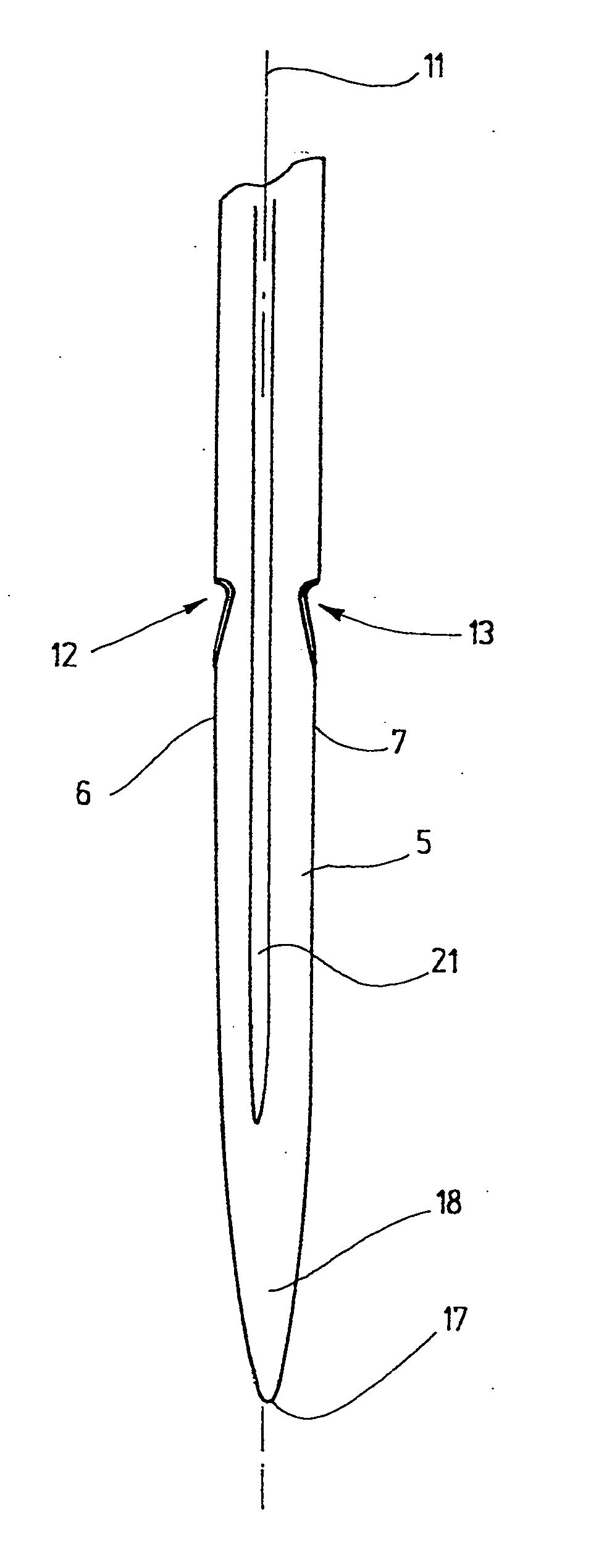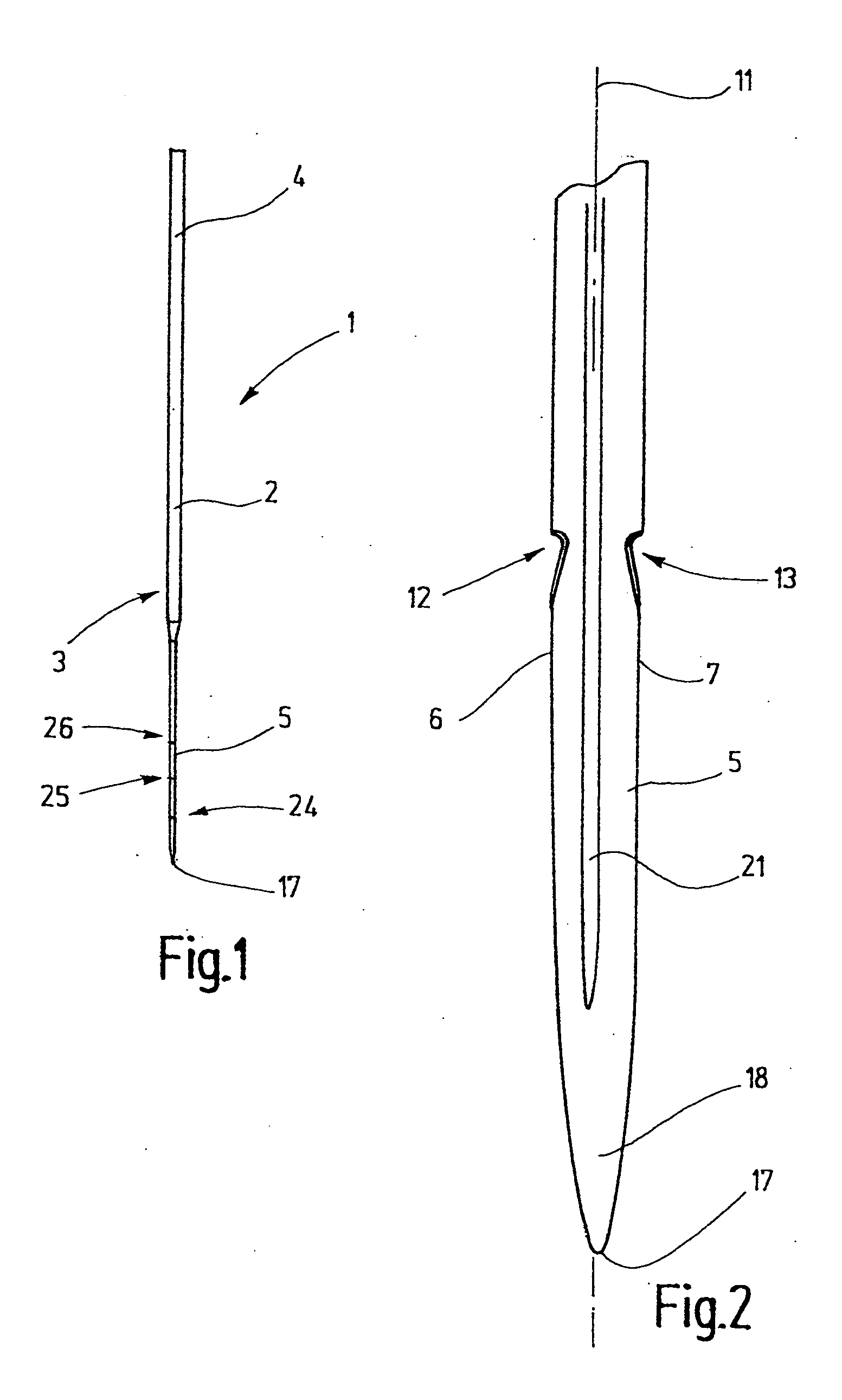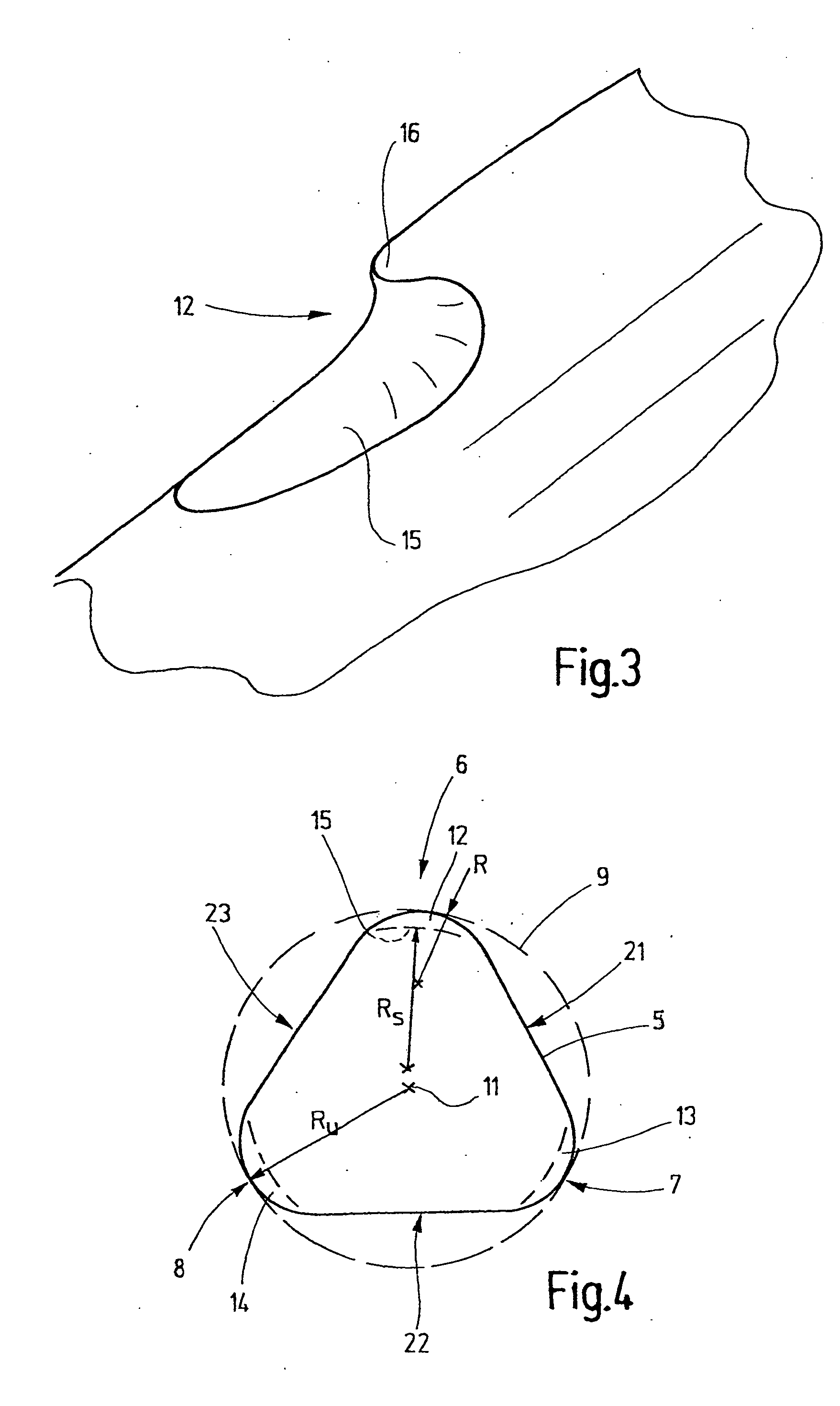Needle for needling flat textile fabrics
a flat textile fabric and needle technology, applied in the field of needles, can solve the problems that the cross-sectional shape of the after-treatment needle cannot be readily derived, and achieve the effects of increasing the working speed, increasing the elasticity, and weakening the working par
- Summary
- Abstract
- Description
- Claims
- Application Information
AI Technical Summary
Benefits of technology
Problems solved by technology
Method used
Image
Examples
Embodiment Construction
[0024]FIG. 1 shows a needle 1 serving as an after-treatment needle, whose needle body 2 has a straight shank 3, provided at one end with a clamping part 4 which may be cylindrical. At the opposite end of the shank 3 a working part 5 is formed which constitutes a one-piece component with the clamping part 4.
[0025] The working part 5 is of particularly slender configuration. In the present embodiment it has a triangular cross section, whose height is 0.35 mm or less. The length of the working part 5 is, however, at least preferably, in excess of 10 mm. Also referring to FIG. 4, on the working part several edges 6, 7 and 8 are formed, each having a radius of curvature R which is preferably of identical size for each edge 6, 7 and 8. The radius of curvature is at least of such a size that the edges 6, 7 and 8 cannot be considered as sharp and thus, during rapid penetration of the working part into a woven fabric, felt or other flat textile product, the edges are not capable of severing...
PUM
 Login to View More
Login to View More Abstract
Description
Claims
Application Information
 Login to View More
Login to View More - R&D
- Intellectual Property
- Life Sciences
- Materials
- Tech Scout
- Unparalleled Data Quality
- Higher Quality Content
- 60% Fewer Hallucinations
Browse by: Latest US Patents, China's latest patents, Technical Efficacy Thesaurus, Application Domain, Technology Topic, Popular Technical Reports.
© 2025 PatSnap. All rights reserved.Legal|Privacy policy|Modern Slavery Act Transparency Statement|Sitemap|About US| Contact US: help@patsnap.com



